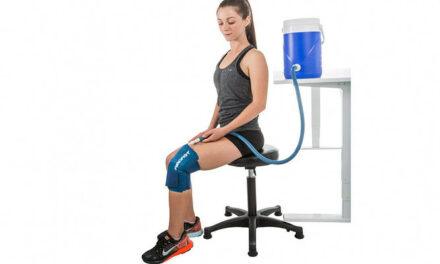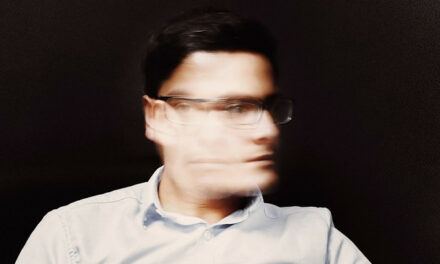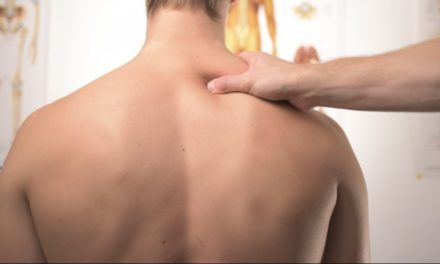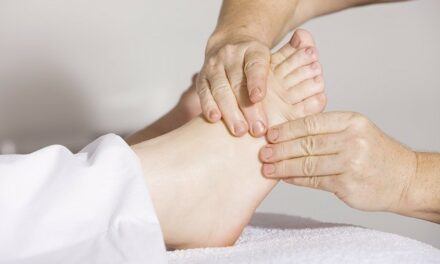Disc bulging or disc protrusion is a process of wear or loss of elasticity of the intervertebral disc, which then pushes the disc towards the spinal cord or nerve roots. Once the bulging disc reaches and touches one of these nerve structures, that causes the pain.
Bulging is the initial process of a herniated disc, and if left untreated, it will most likely develop into the herniated disc picture.
In this article, we will be exploring the disc bulging, including causes for disc bulging, symptoms suggesting you may be experiencing a bulged disc, what does a bulging disc feel like, the difference of a bulging disc and a herniated disc, and treatment options.
Let’s look into the structure of the spinal column and how the disc can bulge into the nerve structures.
The intervertebral disc is a structure formed by a gelatinous nucleus and a more rigid capsule, called the fibrous ring that protects this nucleus. It is located between the vertebrae of the spine and acts as a “shock absorber”, reducing the impact between the vertebrae, for example when walking or running and allowing some mobilization. When wear of this intervertebral disc occurs, it bulges.
In this bulging or protruding phase, the fibrous ring is still intact despite being distended. The herniated disc arises, especially when the ring ruptures, allowing extravasation of the nucleus.
The disc bulging occurs mainly between the L4 – L5 and L5 – S1 vertebrae. In these cases, its main symptoms are lower back pain and sciatica. But this problem is also quite common in the cervical spine, causing symptoms of neck pain called cervical pain or neck pain.
Tip: always differentiate neck pain from migraine headache.
Causes for Disc Bulging
Age-related causes
A very common and inevitable source of a bulging spinal disc is the changes that occur with aging, and the cause has close risks to a herniated disc too.
The change occurs within the disc and natural chemical changes over time lead to a weakening of the tough outer shell and lose the moisture.
Also, the risk in the bulging disc increase when with age factor the ligaments supporting the spine changes.
Tip: watch for high blood pressure-related symptoms.
Posture-related problems
The bulging disc can also cause by a poor back posture when lifting heavy items or even items that would not normally overload your physical abilities. If your back is not sufficiently protected during lifting movements, with repetition of the manoeuvre, an undue amount of tension can directly weaken a spinal disc, or together with age-related causes can make the disc bulge worsen.
A popular example is incorrect lifting posture, where those lift mostly putting weight on the back muscles rather than the leg muscles, keeping the knees straight rather than bending them and bending the spine rather than keeping it upright. In this scenario, even if it seems like you maintain the proper lifting posture, you can easily damage your spinal discs, with repetition of the ‘incorrect’ posture and if you try to lift more weight than what your spine can safely support.
Tip: Here are Causes for Back of the Leg Pains, Groin Pains, Upper Leg Pains, Calf Pains, and Foot Pains.
Occupational Risks
Some of us involved in jobs that regularly require heavy lifting or repeated intense body movements.
Such risk body movements include tilting, twisting, pushing and pulling objects or items. Over time, repetitive exposure to these work demands can lead to unusual back changes and, directly or indirectly, increase the chances of swelling of a spinal disc, leading it to bulge, protrude or herniate.
Traumatic Injury
Major physical trauma such as a fall or car accident can force the disc to bulge. The sudden increase in pressure forces the nucleus through the capsule.
These sudden unexpected injuries are more likely to cause symptoms because the herniation is immediate, and the power of the trauma makes it likely for the nucleus to rapture and press against the surrounding parts of the spine.
Tip: Did you know that your fall risk is high when you have high blood sugar levels
and low sugar levels (hypoglycemia)? If you have Prediabetes or Diabetes, therefore, you should be extra careful with risky movements. Don’t get caught up with Myths about Diabetes but monitor for Diabetes Symptoms Typical for Women
and Men. It doesn’t mean that you should avoid doing Diabetes Exercises
though.
Genetic Inheritance
There are cases where people are born with an unusual weakness in spinal discs. This means that with growing age, these individuals will experience abnormal disc bulging with a tendency for multiple disc problems.
A person with inherited risks of bulging or high risk of a herniated disc may have a usually high chance of detrimental changes in multiple spinal discs.
How do you get a Bulging Disc?
Disc bulging occurs following the initial intervertebral disc injury. Usually caused by degeneration (wear and tear), the disc begins the aging process and the fibers that hold its shape begin to fade, showing an enlarged shape, as if it were a “belly” in the vertebral disc.
As earlier noted, an intervertebral disc has 2 layers: an outer layer of fibrous cartilage (ring fibrosis) and the inner charge of a jelly-like material (the pulpus nucleus). The outer layer wall of a disc can become weakened due to several reasons.
As people get older, the fibrous material becomes more fragile. Excessive effort can break ring fibrosis. Poor diet and exercise habits also can weaken the disc.
Symptoms of Bulging Disc
A patient with a bulging disc may have no pain to little pain involved until the bulging disc reaches the stage of herniation. Bulging disc symptoms are not easy to identify as the patient may have no pain at all until the symptoms reach a certain severity level, and this the reason why it is difficult to identify the problem of bulging disc until the condition gets serious in most of the cases.
With a little bit of knowledge about the signals of the bulging disc, one can prevent it from reaching the severe level.
A bulging disc in the neck/cervical area common symptoms includes pain or tingling in the hands, fingers, neck, arms or shoulders. Whereas, a bulging disc in the lumbar area symptoms holds pain in the thighs, feet, buttocks and lower back.
Bulging disc creates pressure on the nearby nerves creating a variety of sensations. As per clear evidence of bulging disc, it ranges from numbness and mild tingling to excruciating pain, based on the severity of the case.
Bulging disc symptoms requires immediate medical evaluation before it becomes a life-threatening condition. In cases like where the sciatic nerve is compressed the patient feels sensations down one leg or the other, but usually not on both.
Moreover, bulging disc compressing the nerves causing bladder incontinence, are emergency medical situations and needs immediate medical help.
Saying so, some patients with a mild bulge may not complain of any back pain for years without disturbing the symptoms of a bulging disc, whereas other patients may experience extreme life-threatening consequences starts and become ‘severe’ within few weeks.
The Difference of a Bulging versus a Herniated Disc
As we age, the spinal discs begin to dehydrate and become stiffer and more fragile, making the discs less able to adjust to compression and stressors. Although this is a part of the healthy aging process, a slight change in manoeuvre can result in a painful event for some individuals and ultimately can cause a herniated disc, disc bulge and other issues within the spinal discs.

What is a Herniated Disc?
The herniated disc is also known as “disc hernia or disc prolapse”.
Vertebral discs are prone to rupture. With slight damage to the disc wall and when it opens that causes the discharge of disc material compressing the nerves of the surrounding spinal column.
Doctors believe that a missed-placed disc content could be surgically replaced using an artificial one.
For some adults, pain and symptoms due to herniated disc are rather common problems.
The spine is formed by multiple anatomical structures, including bones, muscles, joints and ligaments. Each structure has nerve endings that can detect pain when it occurs.
Causes for Herniated Disc
Over the years, the spinal discs can lose flexibility and elasticity. The ligaments surrounding the discs become fragile and can be torn more easily. A herniated disc can compress the surrounding spinal nerves (radiculopathy) or the spinal cord (myelopathy), causing painful symptoms.
Symptoms of a Herniated Disc
Cervical disc herniation involves:
- pain in the neck and shoulder,
- pain radiated to the arm,
- numbness or tingling sensations in the upper extremities (arm or hand).
The pain can be diffuse, intense and difficult to localize, or acute, burning, and easily localizable. Typically, pain in the arms or neck is the first sign of irritation of the nerve roots due to cervical problems.
Pain symptoms are serious complaints of a disc bulging and needs medical help before they lead to muscles weakness, tingling and numbness. The main complain that is felt in the case of a herniated disc in the spine is sharp back pain, sometimes can be challenging to differentiate from kidney pain.
In some cases, episodes of localized pain may have occurred previously, which starts from the spine and continues to the lower limb to which the involved nerve is attached.
Pain is generally described as intense or acute. It often worsens when it reaches the lower limb of the affected side.
The onset of pain due to a herniated disc may occur suddenly or may be preceded by a sensation of rupture or snap at the level of the spine at the back.
Tip: here are the causes for upper back pain and lower back pain.
What is a Bulging Disc?
Many people confuse bulging discs as a herniated disc, although they both are very different. So it’s essential to know the difference.
A herniated disc is a crack that occurs on the outer layer of the disc, mainly known as annular. The herniated disc crack leaves an effect on the small portion of the disc, allowing the soft inner material of the pulpous nucleus to rupture outside the disc. However, a bulging disc affects a larger part compare to a herniated disc; it is still less painful.
People have more of bulging disc problems than herniated disc issues.

What can you do for a bulging disc?
Conservative treatment
A bulging disc doesn’t essentially mean that you just need endure surgery. Treatment of a bulging disc depends on its symptoms and severity. And, most patients with a bulging disc don’t want surgery.
Your symptoms can usually be treated with conservative treatment, such as:
- ‘watchful waiting’ to see if symptoms subside,
- Posture/lifestyle correction,
- painkillers,
- physical therapy or
- relaxation exercises.
Depending on the severity, these are effective and collectively work as pain relief.
Patients with a history of bulging disc complain, with the right amount of care can completely cure their bulging disc problem in just several weeks or months.
If your symptoms constantly get worse, your doctor is more likely to suggest surgery.
Tip: You may also try Natural Remedies for Chronic Back Pain, while working with your doctor to explore all Back-Pain Treatment Options.
Surgical treatment
When the case requires surgery to treat a bulging disc, the doctor may perform a surgical procedure that is carried in two steps, called ‘Laminotomy’ and a ‘Discectomy’.
Laminotomy and Discectomy
Laminotomy is the first step taken. The term laminotomy means “making an opening in the blade” in the spinal canal to get the pinched nerve root. Once this step is accomplished the second step, the discectomy, takes place
The term discectomy means “removing the disc”. An effective stereoscopic microscope is used in the process to provide magnification and illumination to allow clear visualization of the nerve and surrounding structure through a less than the one-inch long incision.
Keeping the nerve root protected with a specialized retractor, protruding disc fragments and any remaining loose or degenerated disc material is removed carefully with a small grasping device.
After, the small opening left in the annulus regenerate in four to six weeks’ timeframe and fill in with new disc material.
Transthoracic Decompression
If the protruding disc is in the thoracic spine and surgery is required, your doctor may perform the procedure called transthoracic decompression.
Transthoracic decompression is a way to decompress your spinal nerves or your spinal cord by removing the problematic disc and small amount of the vertebral body from a small opening in the side of your chest.
If you need to remove a large portion of the vertebra, you may also need spinal fusion.
Costotransversectomy
A protruding disc in the thoracic spine can also be surgically treated with a costotransversectomy, in which a section of the transverse process (the small bone on the side of the vertebra) is removed to help the surgeon to see and treat the injured disc through an incision in the back of the spine.
Video-assisted thoracoscopic surgery
Video-assisted thoracoscopic surgery (VATS) is a new way of performing thoracic surgery, in which the doctor can view and treat the protruding disc using a small TV camera that passes through the chest cavity. Because the incisions are small, most patients find it easier to recover following a VATS procedure.
In some cases, the protruding disc surgery requires removal of a large portion of the disc bone and material. However, this can result in leaving the spine section loose and unstable. Therefore, to fix them, it would be necessary to fuse the bone just above and below the unstable section.
Bone graft materials are used; they help unstable bones grow together. Most commonly plates, rods and screws are used to hold bones in place so that the bone graft heals faster.
Conclusion
Disc bulging disturbs 8 out of 10 people at some point in their lives but in most cases subsides within 6 weeks. A positive attitude, regular physical activity (e.g. exercise) and a quick return to work are essential elements of recovery.
If your regular work cannot be done initially, it is in the patient’s interest to return to some modified (light or restricted) service. Your doctor may recommend these activities for limited periods so you can negotiate with your employer.
The key to preventing recurrence is below:
- Practice appropriate lifting and sitting techniques
- Proper posture while sitting, standing, moving and sleeping. (If you Struggle to Sleep Through Night follow the link to identify the Reasons for Night Pain)
- Use a guided exercise program to strengthen weak abdominal muscles and prevent repeated injury
- An ergonomic desktop
- Maintain healthy body weight and if you are over weight focus on a lean body mass
- A positive attitude and stress management
- Stop smoking
Tip: Watch for Stress Symptoms Typical for Men and Women.
Tip: If you struggle with Back Pain, a Transfer Bench with Swivel Seat can be helpful with having a warm shower.
Tip: Discuss with your doctor if an Infrared Heating Mat
or Quell Pain Reliever is a suitable option for pain relief.










Recent Comments